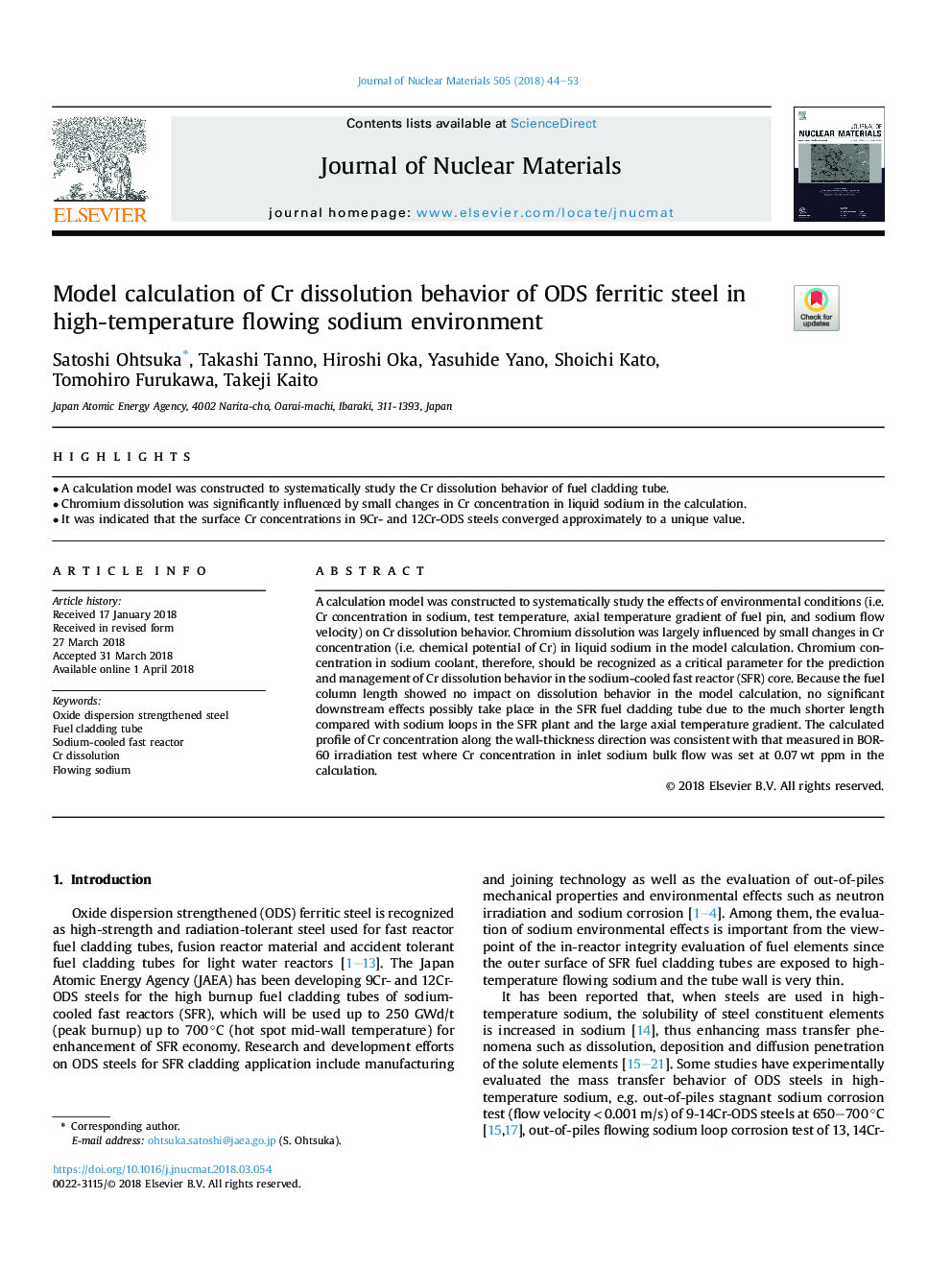| Article ID | Journal | Published Year | Pages | File Type |
|---|---|---|---|---|
| 7963158 | Journal of Nuclear Materials | 2018 | 10 Pages |
Abstract
A calculation model was constructed to systematically study the effects of environmental conditions (i.e. Cr concentration in sodium, test temperature, axial temperature gradient of fuel pin, and sodium flow velocity) on Cr dissolution behavior. Chromium dissolution was largely influenced by small changes in Cr concentration (i.e. chemical potential of Cr) in liquid sodium in the model calculation. Chromium concentration in sodium coolant, therefore, should be recognized as a critical parameter for the prediction and management of Cr dissolution behavior in the sodium-cooled fast reactor (SFR) core. Because the fuel column length showed no impact on dissolution behavior in the model calculation, no significant downstream effects possibly take place in the SFR fuel cladding tube due to the much shorter length compared with sodium loops in the SFR plant and the large axial temperature gradient. The calculated profile of Cr concentration along the wall-thickness direction was consistent with that measured in BOR-60 irradiation test where Cr concentration in inlet sodium bulk flow was set at 0.07â¯wt ppm in the calculation.
Related Topics
Physical Sciences and Engineering
Energy
Nuclear Energy and Engineering
Authors
Satoshi Ohtsuka, Takashi Tanno, Hiroshi Oka, Yasuhide Yano, Shoichi Kato, Tomohiro Furukawa, Takeji Kaito,
